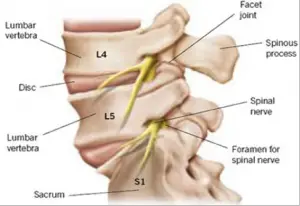Back pain, at it’s best, is a mild inconvenience. At its worst back pain can turn into a debilitating condition. According to the World Health Organization low back pain is a leading cause of work absence and activity limitation.
It’s estimated that 80% of people will experience back pain in their lifetime.
As a result 250 million days of work will be missed in America alone.2 That’s 2 days a year for every working adult. Obviously it is a serious and widespread problem.
Unfortunately the direct causes of most cases are difficult to diagnose. Imaging tests come back negative and you’re told nothing is wrong; it’s frustrating. The pain is real, it’s difficult to cope with, and doesn’t seem to get better.
The good news is most instances of back pain are not a result of serious conditions like arthritis or cancer. Rather, factors such as posture, depressive moods, obesity, height and age have been identified as potential risks. Meaning it’s treatable, and in some cases, preventable with stability ball exercises.
Preventing Low Back Pain with a Swiss Ball
Research suggests that a multidimensional treatment plan can seriously improve the quality of life for people with back pain. In isolation a treatment may not address all the issues contributing to the pain.
 Mindfulness and physical activity for example could work well together in combination to address several key factors in back pain. Stretching, eating a healthy diet, lowering stress, and getting adequate sleep are also important to help with low back pain.
Mindfulness and physical activity for example could work well together in combination to address several key factors in back pain. Stretching, eating a healthy diet, lowering stress, and getting adequate sleep are also important to help with low back pain.
Among all the different methods and strategies to relieve back pain, stability ball exercises shouldn’t be overlooked. It’s safe and effective for most people. Use it at home, at the gym, to stretch, or get stronger. Convenient and easy to use, the stability ball is a great tool for improving mobility and strength around the spine.
Common Causes of Low Back Pain Where a Stability Ball Might Help
 Muscle Strains
Muscle Strains - Disc Herniations
- Osteoarthritis
- Facet Syndrome
- Degenerative Disc Disease
- Spinal Stenosis
Do you have low back pain? See our reviews for the best treadmills for low back pain
Our Favorite Stability Balls
Click on Image for More Information
Click on Image for More Information
Click on Image for More Information
FAQ about Using a Swiss Ball to Help with Back Pain
Why Swiss Balls are Great for Low Back Pain
Swiss balls are great for low back pain pain for a few specific reasons. The unstable nature of the swiss ball makes you recruit more muscles in unison to ball. This co-contraction is great to help with normal spine control and strengthening.
Secondly, using a swiss ball is usually done in a non-weight bearing position. By exercising and strengthening in a low load position this allows your back to gain strength with low stress from gravity.
Can You Use a Swiss Ball with a Disc Herniation?
Absolutely. A swiss ball is a great way to get your spine feeling better after a disc herniation and someone that we use in the clinic all the time. It’s best to start slow if its a new injury, but something we highly recommend.
Can You Use a Swiss Ball with Arthritis in the Back?
Yes, please do. Using a swiss ball is great for arthritis. Using a swiss ball reduces the force on the spine but still allows for strengthening exercises which is great for arthritis.
Why Stability Balls are Good to Sit On
Sitting on a swiss ball is supposed to engage your core more. This improved core strength and activation over time is good for overall spine health. It also makes you change your spine position in sitting more frequently which your back also likes as well.

Can you Pop a Stability Ball
Absolutely! Watch our for pets with teeth, sharp objects, kids with evil intentions, and be sure to obey any weight restrictions.
The Best Swiss Ball Exercises for Low Back Pain
Below you’ll find a variety of ways to stretch and strengthen your back using a stability ball for exercises. It’s best to start slow and be patient. Try to progress repetitions at 10-15% per week to avoid injury. We have broken down the exercises into 2 categories:
- Exercises acute and new back pain
- Exercises for strengthening the low back
Stability Ball Exercises for Acute Low Back Pain
Child’s Pose Ball Roll Outs
Allow your arms to roll with the ball until you reach a “comfortable” limit, relax hold for a few seconds and return to an upright position. Hold for 30 seconds or longer, and each time try and go a little bit further if you can.
Knee Tucks on Stability Ball
Lay facing up with legs extended on the ball. Using a slow steady tempo pull your knees toward your chest, briefly hold and return to your starting position. This exercise will help stretch the low back and open up the spine for slight decompression.
Trunk Rotations with a Stability Ball
Lay facing upward, calves and feet resting on the ball, thighs perpendicular to the ground. Slowly rotate until one glute is raised then return to starting position, briefly pause, and repeat on the other side. You will feel a stretch on the side of the hip and into the low back. Only go as far as you can tolerate.
Lumbar Extension and Lateral Stretch
Move slowly as you progress toward full extension of your lumbar region. This position can be challenging, especially if never done before. The slow rolling stretches out your spine, while also beginning to make muscles start to work on stability again.
Exercise Ball Back Strengthening Exercises
Stability Ball Squats
Be sure to engage your core first. Using the ball as a guide against your back, simply sit down as though a chair were under you. Stop when your shins and thighs form a ninety degree angle and stand back up.
Back Extensions on Stability Ball
Great for engaging the muscles of your lower back. Start with your legs wide for a large base of support and greater balance. As you become more comfortable progressively bring your feet closer together to increase the difficulty of the exercise.
Stability Ball Bridges with Leg Lift
Legs should be at a ninety degree angle with thighs and torso creating a flat surface. With you core engaged, alternate legs raising to the point where they are level with the rest of your body.
Stability Ball Bird Dogs
With your torso and thighs parallel to the ground and shins at a ninety degree angle, extend one foot until it is level with the rest of your body. Hold for five seconds before returning it to the floor and switch feet.
Stability Ball Roll Outs
Similar to the Child Pose roll outs with one key difference, changing it from a stretch to a strength exercise. Start by kneeling on the ground and forearms on the ball. As your roll forward brace as though you were about to be hit in the stomach and engage your abs. This’ll support your lower back throughout the movement.
Stability Ball Dead Bugs
This movement requires a lot of coordination, so start slow. Maintain the natural curve of your back while laying on the floor. Move one arm up above your head as you slowly lower the OPPOSITE leg. Bring it back to the starting position and perform on the other side. You should be feeling this in the core.
Works Cited:
- The Hidden Impact of Musculoskeletal Disorders on Americans, United State Bone and Joint Initiative, 2018.
- Rubin Dl. Epidemiology and Risk Factors for Spine Pain. Neurol Clin. 2007; May;25(2):353-71.
- Hartvigsen J et al. Low Back Pain Series: What Low Back Pain Is and Why We Need to Pay Attention. Lancet, June 2018; Volume 391, Issue 10137; p2356-2367
Other Great Rehab Articles
GLP Weight Loss and Back Health: Effective Strategies and Insights
How to Stay Active After Cervical Fractures: Expert Tips and Advice
Dealing with Painful Stairs After Ankle Replacement Surgery
Walking After a Total Ankle Replacement: Tips for a Successful Recovery
Exercises While Non-Weight Bearing After Ankle Replacement: Elevation, AROM, Leg Raises, and More
Ankle Pain with Stairs: Causes and Home Treatment Options
Disclaimer: The information provided in this post is for educational purposes only. This is not a substitute for a medical appointment. Please refer to your physician before starting any exercise program.










